Last month I spent some time photographing the Onaqui herd of wild horses in Utah’s west desert. Management of wild horses on public lands is a contentious issue and the BLM has now proposed the use of a relatively new management tool in an attempt at reigning in the population increase of the Onaqui herd. More about that later but first a look at those horses.
There was lots of tension in the herd while I was there and fights were a common occurrence. These two went at it more than once. These first four images are a single fight sequence.
I was very close to the altercation when it erupted and I instinctively reacted in a way that severely tilted my camera to the point that in order to level the horizon I lost much of each frame to rotation. So several of these images had to be signigicantly cropped but I think the tightness allows an interesting perspective on the action. The flashing hooves can inflict serious damage, particularly to the face and the scars on the head of the darker horse from previous fights are obvious.
In fact the horse on the left was probably the most heavily scarred individual in the entire herd.
Being this close to fighting wild horses was an experience I won’t soon forget. I’ve posted this final image before but I decided to use it again because it conveys the intensity so well. Obviously I did not rotate this photo.
The same two horses had a serious scrap an hour and a half earlier – perhaps they really don’t like each other!
It may almost look like they were kissing but I can assure you they were not.
Though fighting in the herd was fairly common most of the horses, most of the time, were involved in more peaceful and mundane activities. There were several young colts in the herd and usually they stuck close to their mothers as they grazed.
But occasionally they wandered and played together. Cuteness personified!
Dust baths were an important part of their regimen at the watering station.
The dust load they could carry after such a bath…
was impressive as it drifted away in the breeze after a good shake.
Management of wild horses on public lands is a huge headache for the BLM, partly because the herds increase in size so fast. The old way of dealing with the problem, rounding them up and trucking those not adopted out to long-term pastures in the Midwest, is fast losing its effectiveness. Last year the BLM spent 64% of its budget caring for 50,000 pastured wild horses. So they’re about to try something relatively new with the Onaqui herd and a few others.
It involves using dart guns to vaccinate mares with a fertility control drug in the hopes of slowing down reproduction. Such methods have been effective in a few trial runs – only 5% of the mares in the Cedar Mesa herd that were vaccinated six years ago and given a booster in 2012 had foals last year.
However there are difficulties with vaccinating wild horses. Many of the herds are extremely skittish and run away when anyone’s within a half mile of them so vaccination is problematic. The Onaqui herd is an exception – they’re acclimated to people and allow close approach (as my experience with them demonstrates) so they’re an ideal candidate for this type of effort.
Wild horse management on public lands is a complicated, hot-blooded issue and I have strong opinions about it but this isn’t the place for that. I simply wanted to report the basics of this relatively new attempt at population control and provide a link (Salt Lake Tribune article) to a source of more detailed information for those who might be interested.
I hope the BLM finally gets off its collective duff and does something effective and practical about this issue. And that the final solution, whatever it is, isn’t just at the expense of wild horses and in favor of all those damned cows…
Ron


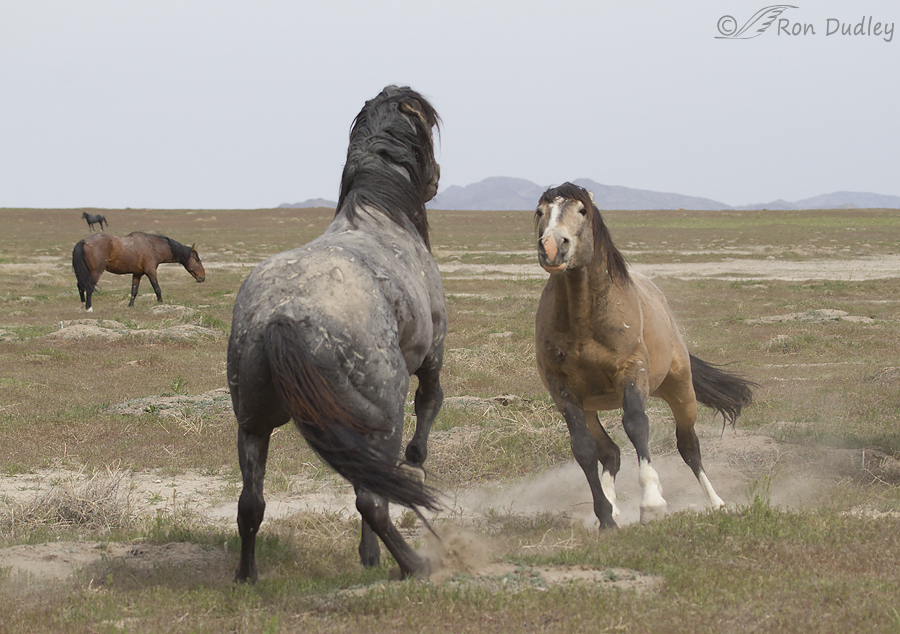
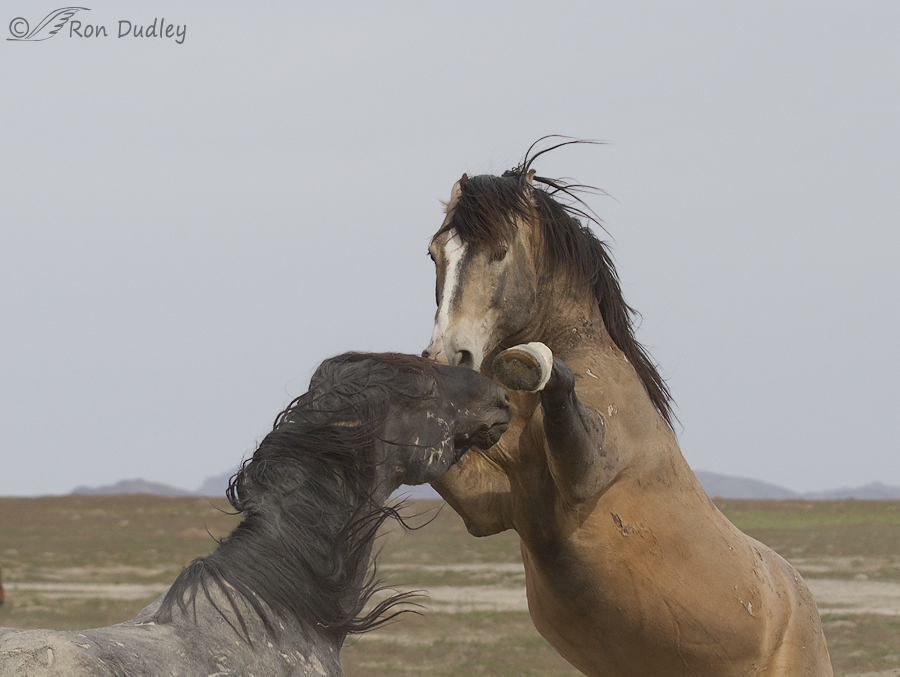
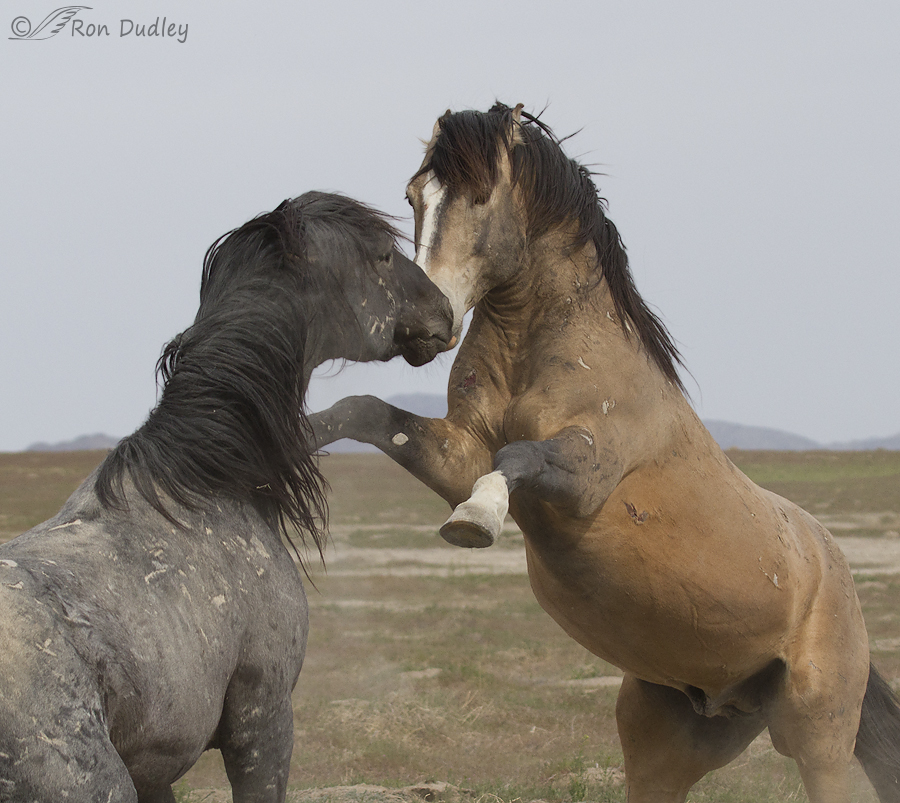
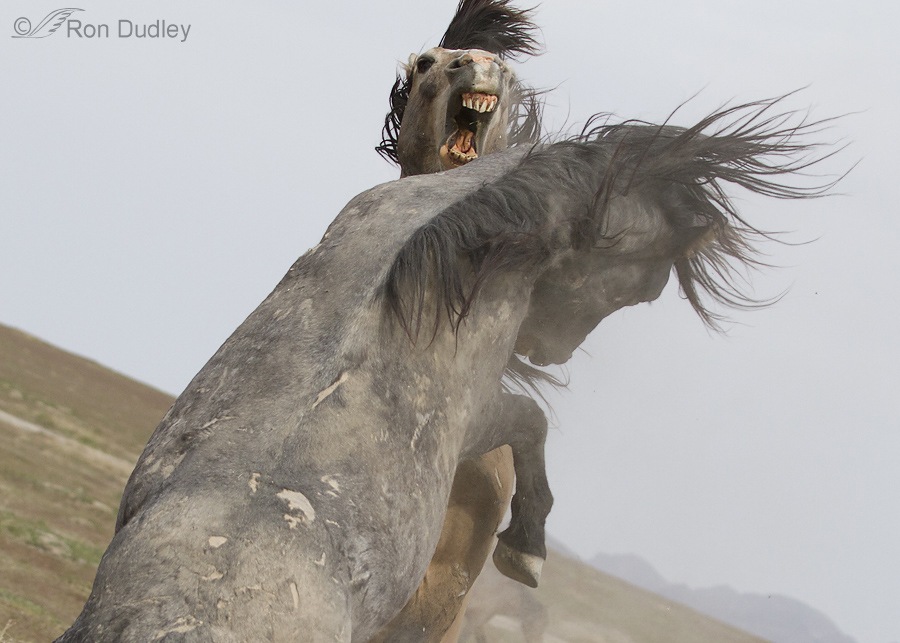
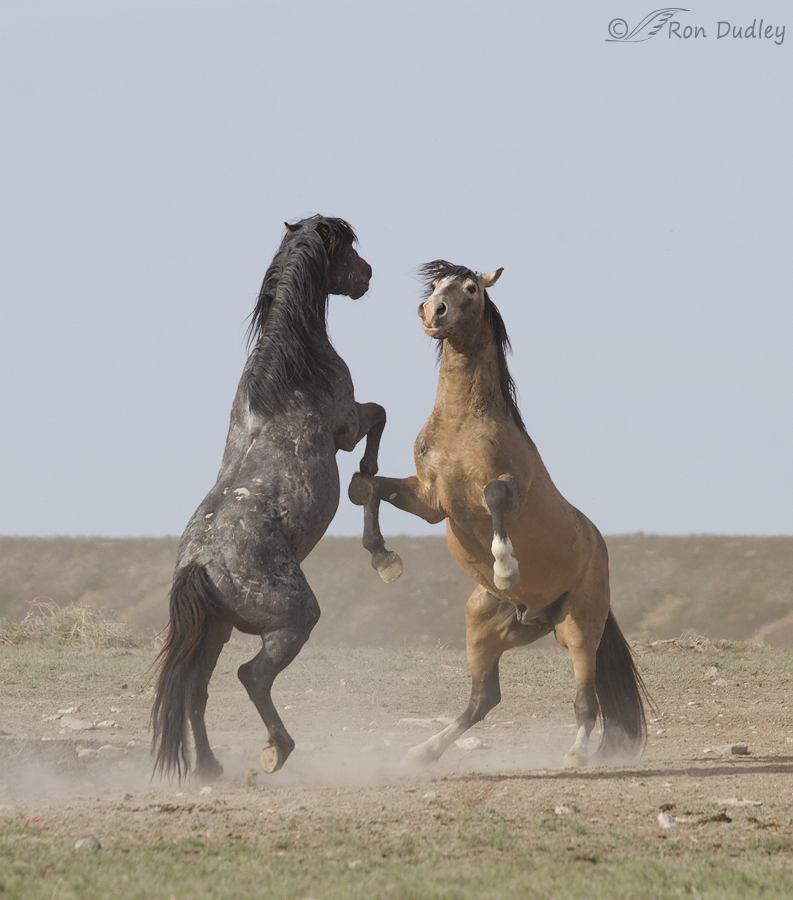
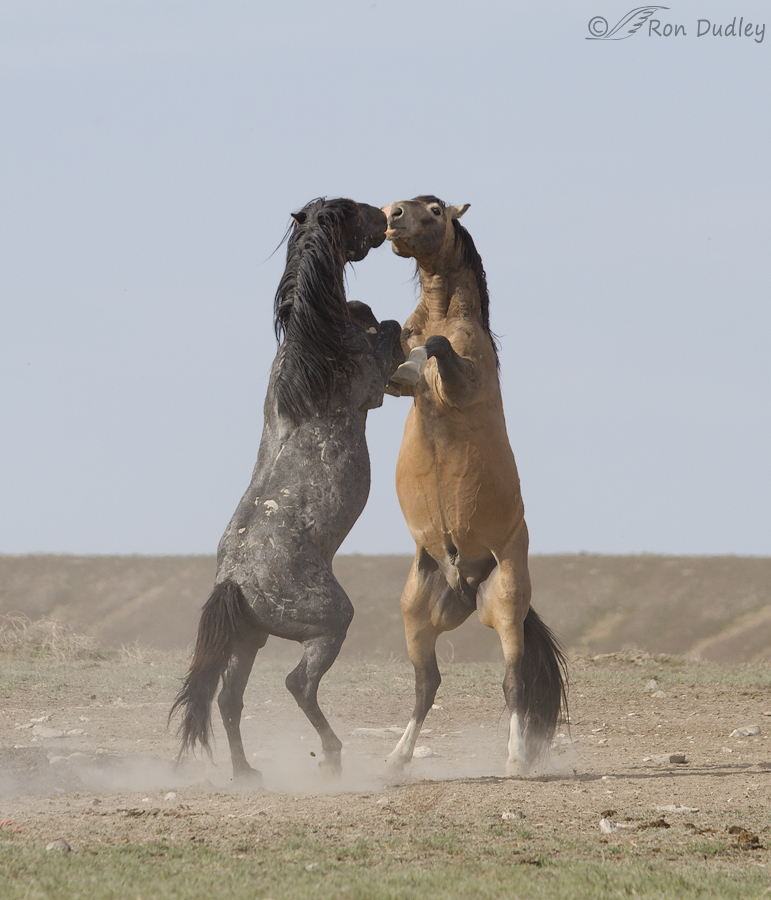
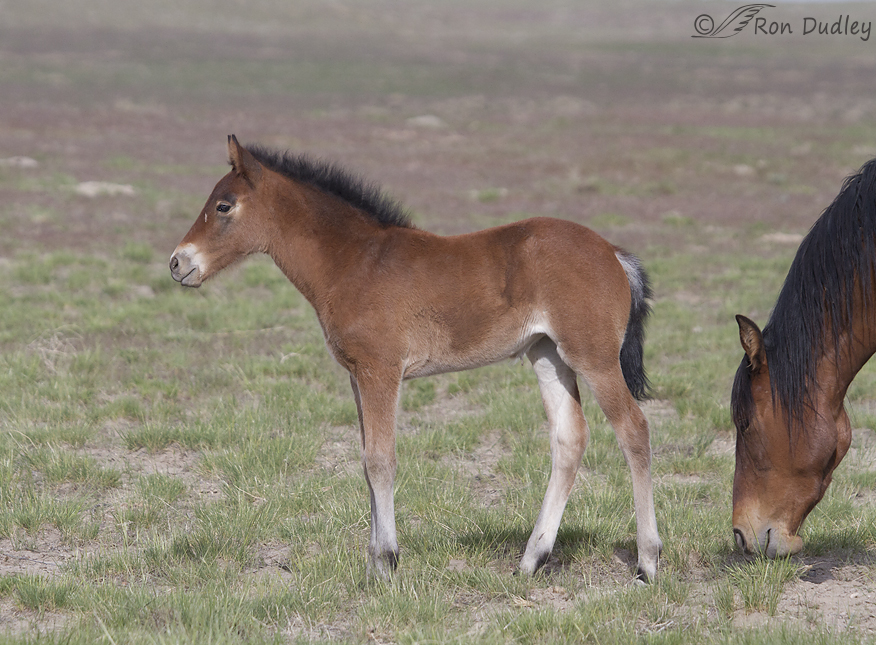
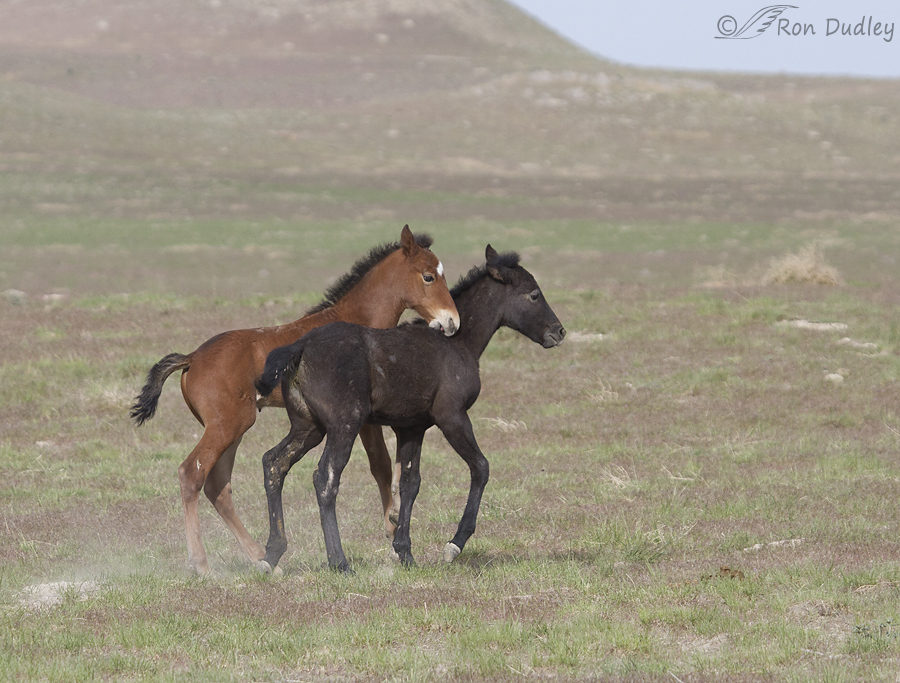
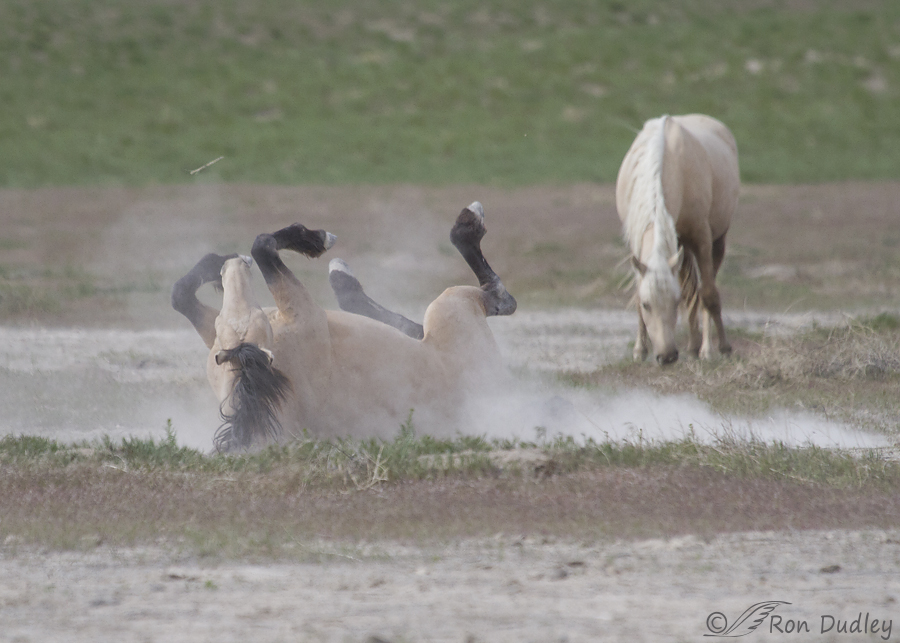
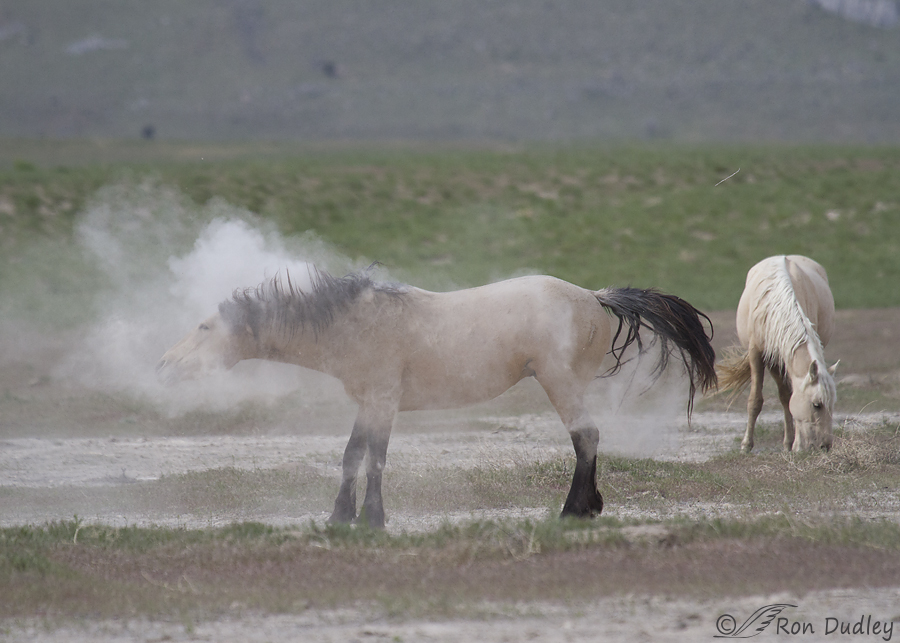
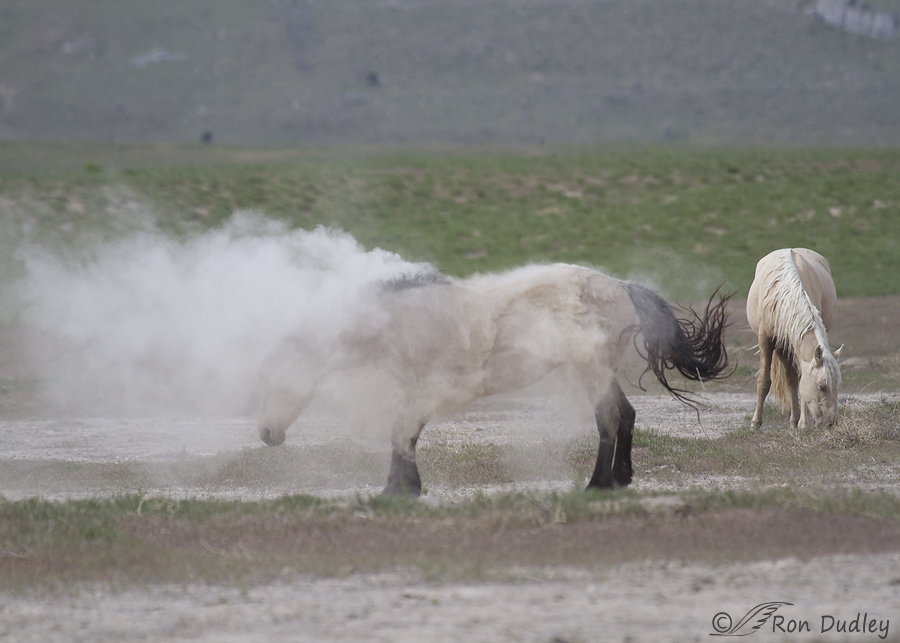
I think that this has been thought of, if not practised as a solution in Alberta. The horses are feral and easier to approach. as one woman said to me, nature seems to take care of itself, as one herd only had two foals.But maybe the mares had been treated. I like your photos amazing how the dark one is so scarred up, well sometimes a guy just has to keep trying…sure don’t want to see the herds wiped out.
Horses are prey animals in nature. Bring back their natural predators, and nature will find her balance quickly. She may eat a cow along the way too.
These shots are all very interesting, but my favorites are the ‘Pigpen’ shots – especially the first one. I am amazed at the way you can capture the shaking action with still photos.
As always, your photography is superb! I’m just wondering how close you were to them. Taking those pictures has got to be scary! They are really excellent!
Maybe my mind is simplistic, but I can’t help thinking how like humans they are. When we look around the world today and see all of the fighting and the killing among humans, I can’t blame wild horses for doing the same. Life is indeed a mystery. Thank you for photographing it!!
I wonder how much that dusty buckskin is worth ($100 for each time he rolled completely over)..,did anybody count?
I am not going to show this post to my partner because it would confirm his worst thoughts about horses. Instead I will look in awe, and hope that a sensible solution is found.
And not mass killing as is too often the solution here.
They truly are awe inspiring animals, Elephant’s Child, especially up close.
Ron these photos are amazing! They look like you painted them. I really hope the birth control works because I would hate to see these animals destroyed.
Thanks, Debbie. I hope it works too.
Powerful animals, powerful images…beautiful, Ron! Battling horses are almost balletic, but horrifying at the same time. Your last two sentences sums it up for me.especially the “in favor of all those damned cows” part . If we ate what cows ate, instead of the cows themselves, we’d have a hellova lot more food available for human consumption, there would be far fewer heart problems and we’d be a whole lot healthier! One of the “solutions” to the wild horse “problem” has been to slaughter them and/or to sell them to European markets for horse meat. Am I a vegetarian? No, I wish I was. Instead, I’m a hypocrite that likes to eat meat, especially beef.
I can’t give up beef either, Patty. Having turkey tonight, though…
Terrific photo-documentary, Ron! Hopefully, there are those somewhere in the bureaucracy that care enough to ensure the interests of these magnificent creatures are considered in future decision making.
I hope so too, Wally. It’s true, wild horses are technically an invasive species and that complicates matters but they mean a great deal to many of us, especially in comparison to cattle. It’s a hot-button topic, that’s for sure.
Another great series, story and photos. We don’t have this problem in the east. What a learning experience this post has been. I don’t know how the ‘authorities’ will end up dealing with this issue. The choice of using the words ‘Final Solution” probably should have been changed. Amazing action shots as usual.
Thanks, Ellen. Out west on BLM and National Forest lands cows are everywhere – like (huge) fleas on a mongrel. Their grazing alters the landscape, their poop (fresh and not so fresh) is underfoot wherever you go and they’re a real pain in the butt – wandering into your camp at all hours and bawling loudly all night. They’re a necessary evil but there’s just too many of them and most ranchers aren’t paying fair market value for their grazing rights. I’d like them to have to pay fair market value and have managers reduce the number of cattle even though that would likely cause the price of beef to go up. We (including me) should probably eat less beef anyway. Just my opinion…
“The choice of using the words ‘Final Solution” probably should have been changed”
I thought of that when I was composing the post but IMO, in this context, there’s no question about what I meant and what I didn’t. So I let it stand.
Thanks Ron for the explanations….on all counts. I knew exactly what you meant and didn’t mean. I love your daily stories. Shame aboutthe cows.
Thank you, Ellen.